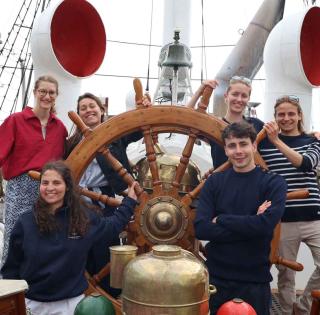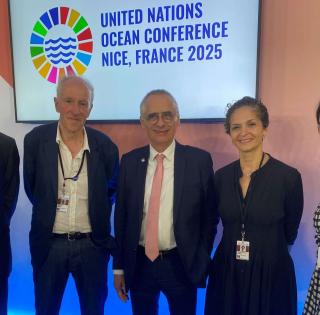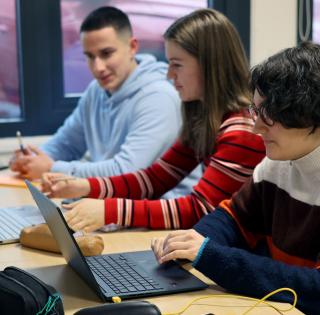
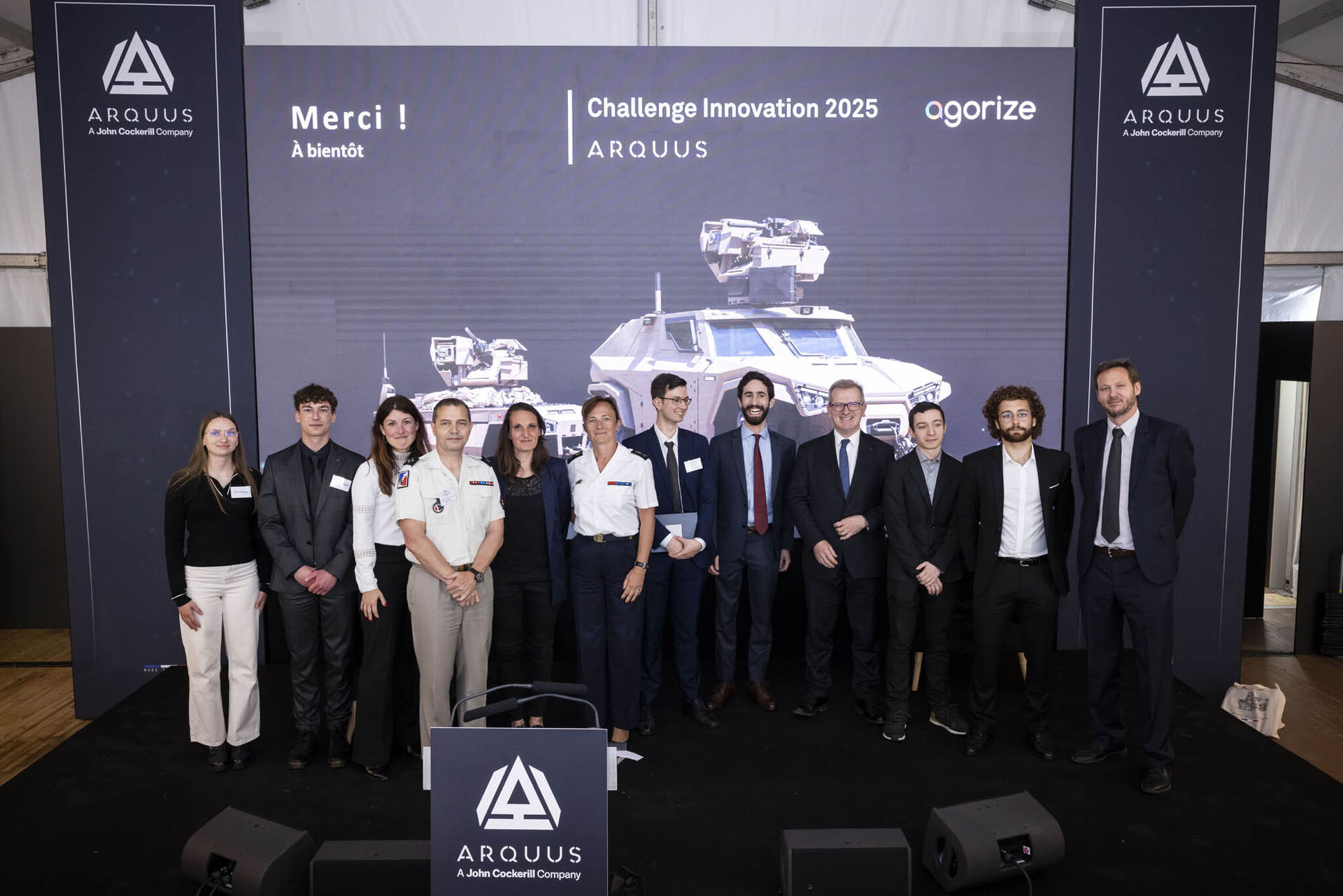
The aim of the competition was to propose to Arquus an innovative solution for tomorrow's ground systems, based on the context, constraints and challenges provided by Arquus.
Brunelle, one of the students involved in the project:
We chose to work on the theme of "Ergonomics and new vehicle functionalities" by proposing a new coating for the Scarabée armored vehicle. This is an adaptive lining.
Over a period of several weeks, the 4 engineering students organized themselves to present Arquus with a complete solution:
- Hippolyte piloted the project, developed the idea and took charge of prototyping
- Astrid worked on the scientific aspect of the solution, based on a niche technology
- Brunelle worked on the sensors
- Rami developed the intelligence that governs the camouflage
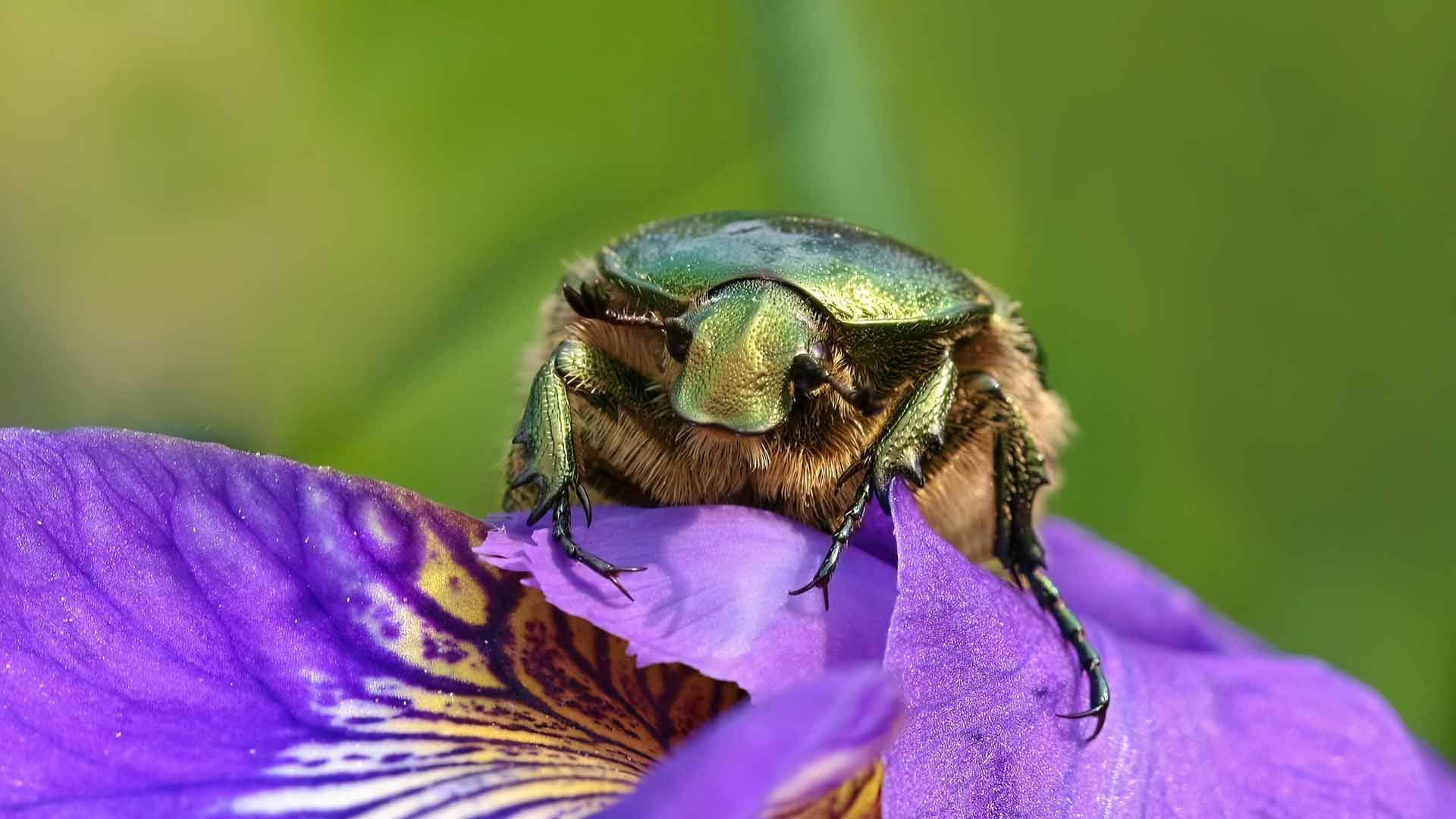
In response to the stealth challenges facing military reconnaissance vehicles, the proposed solution is based on an in-depth study of materials and the creation of a complete system integrating sensors to study the external context, a system to monitor and process the data acquired, and control and command laws to operate the camouflage.
During the various phases of the project, the team received support from Arquus engineers, who confirmed their interest in the project and supported the team in its work.
Hippolyte, completes:
Stealth issues are at the heart of modern conflicts, where detection is often tantamount to elimination, particularly with the development of drones. In this context, remaining invisible in the face of increasingly powerful reconnaissance systems is becoming a condition of survival. The fight for optical and thermal stealth is a race in which France must take part to ensure its sovereignty. The system we are proposing may seem complex, but it is realistic. The technologies we are using are very promising. There's still a lot of work to be done to turn this idea into reality, but the “Chrysina Initiative” could see the light of day..
On Wednesday June 4, Hippolyte and Brunelle met with Arquus executives, the CEO of John Cockerill, high-ranking officials from the DGA and Lieutenant General Bruno Baratz to present their project in person and answer the jury's questions. The Arquus teams praised the quality of the work carried out and the creativity of the ENSTA team, who came away with a very fine 2nd place and contacts for their future engineering careers.
* The challenge was relayed to students as part of a partnership between BEST ENSTA Brest and Agorize.












